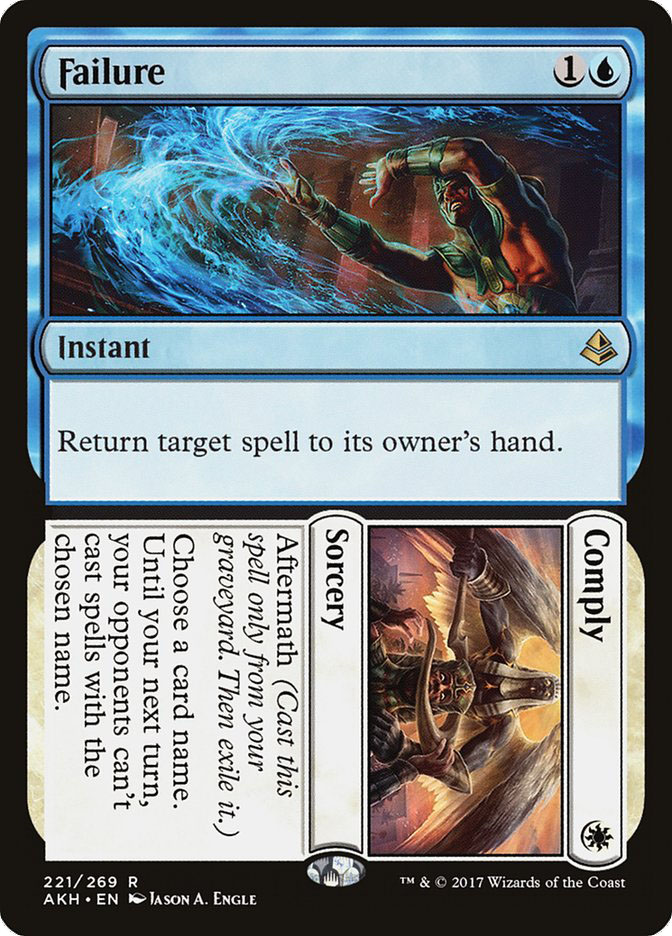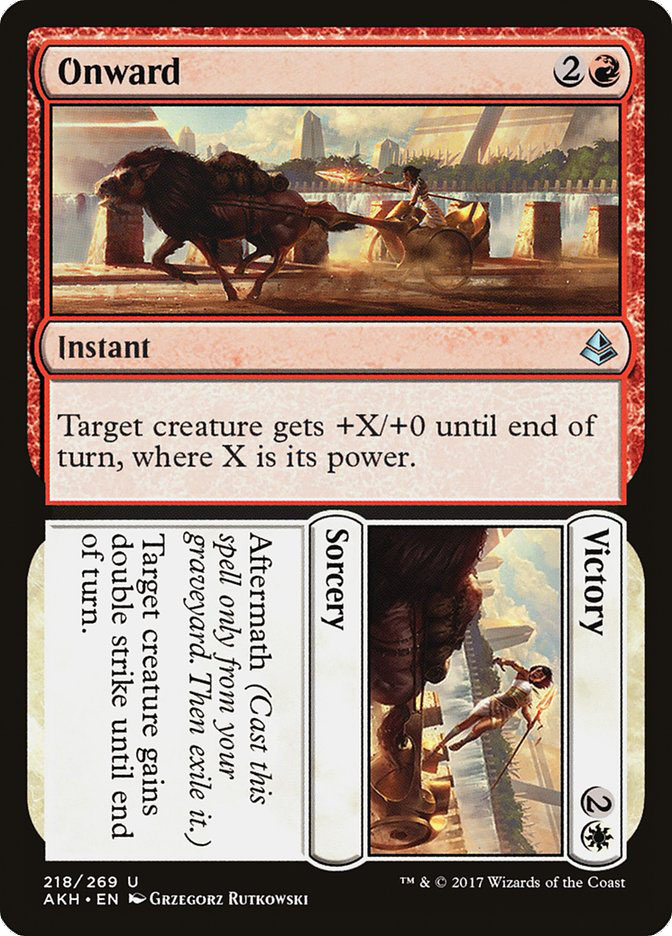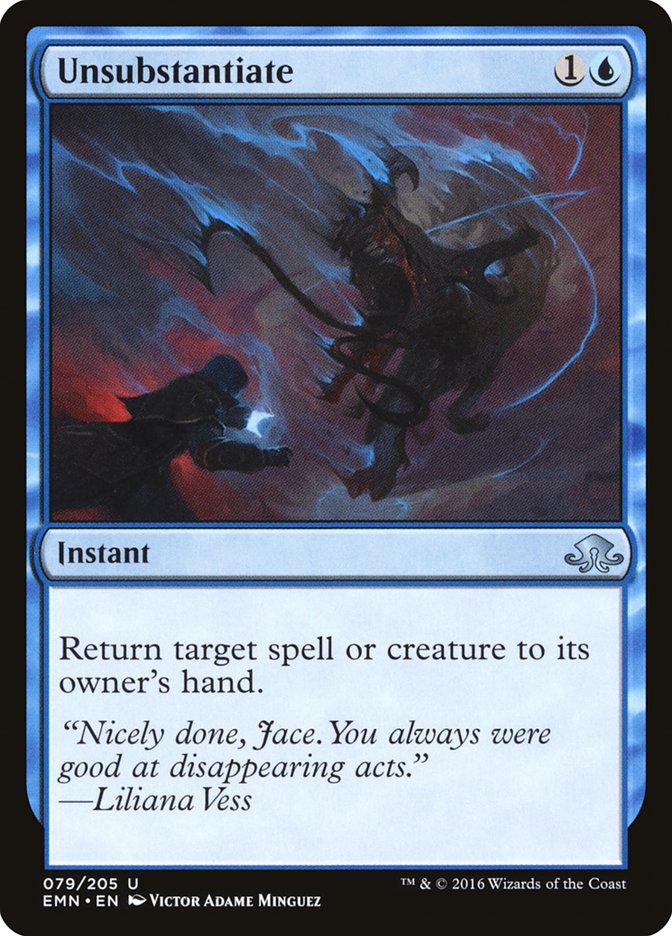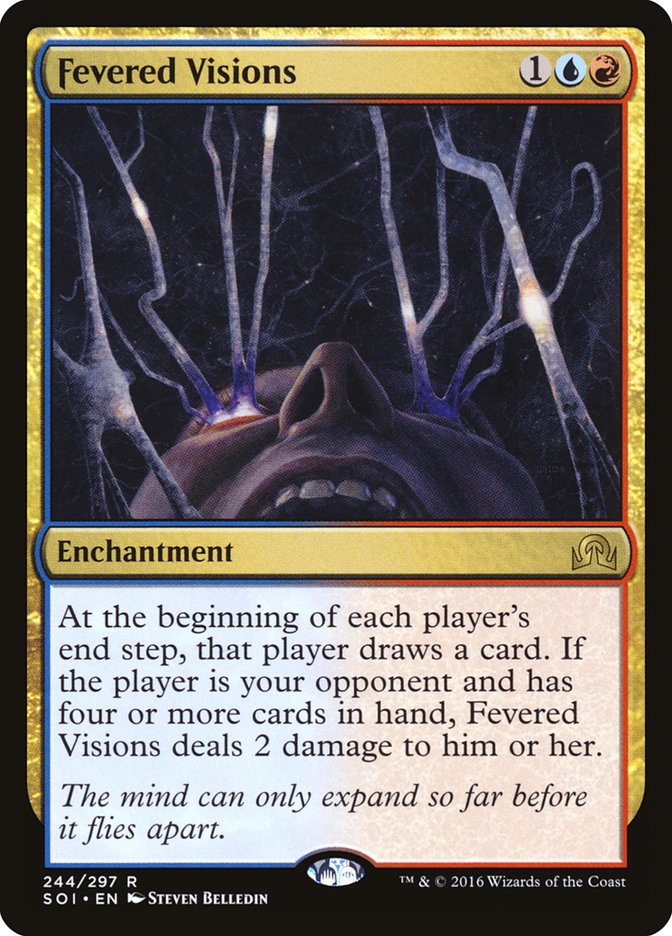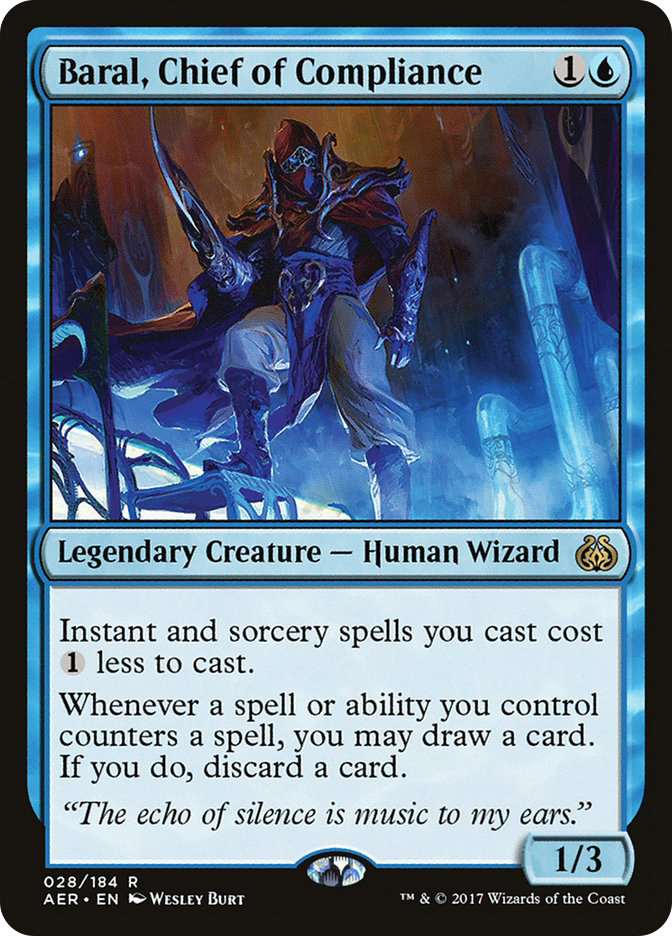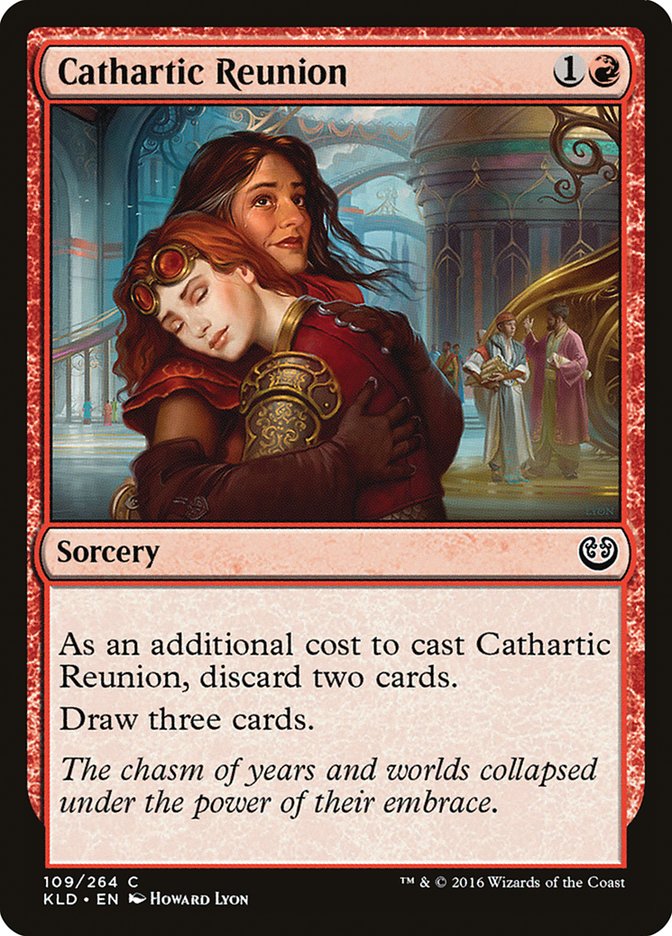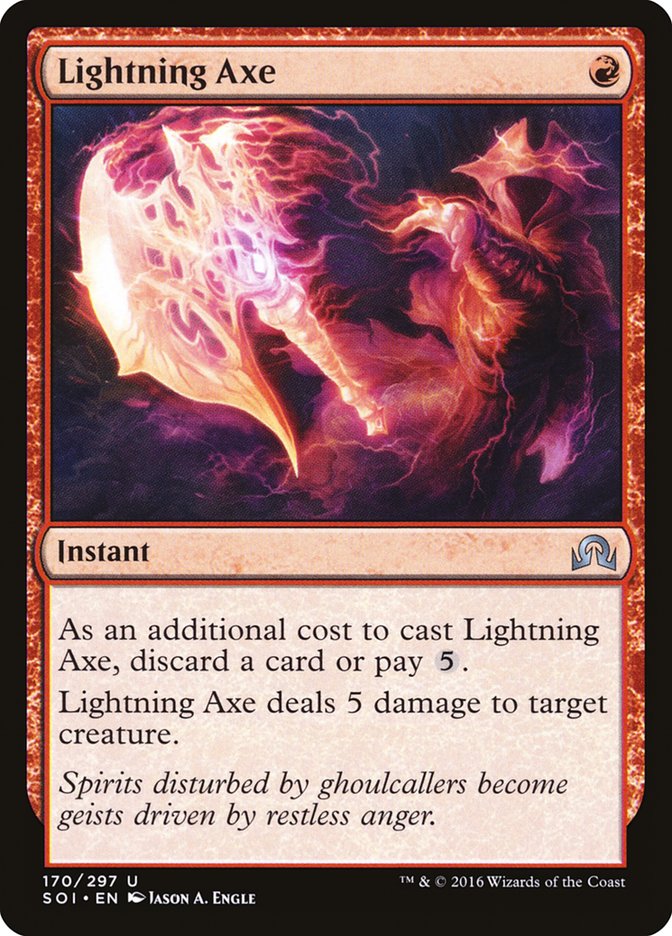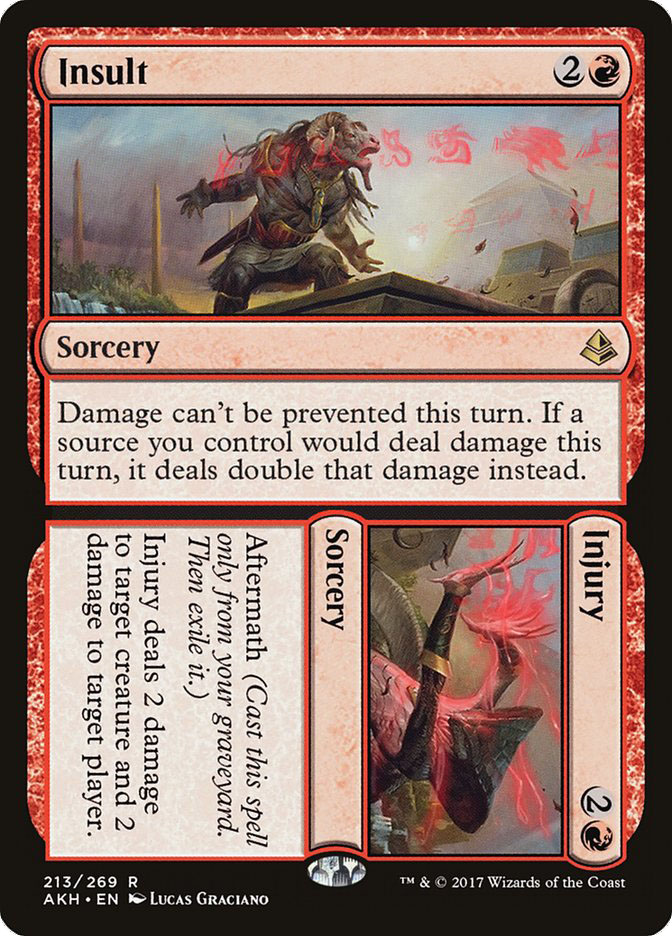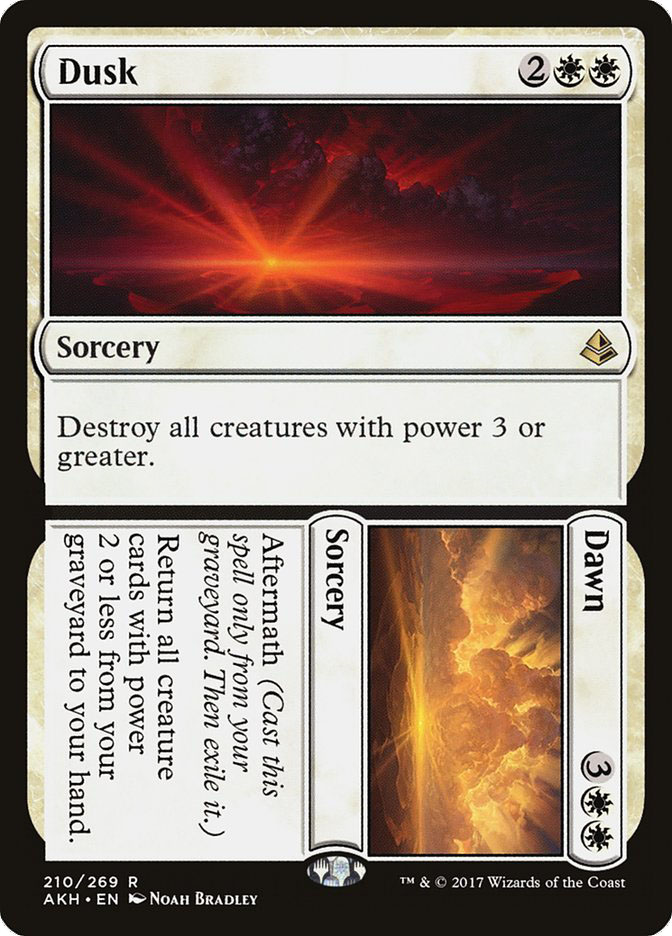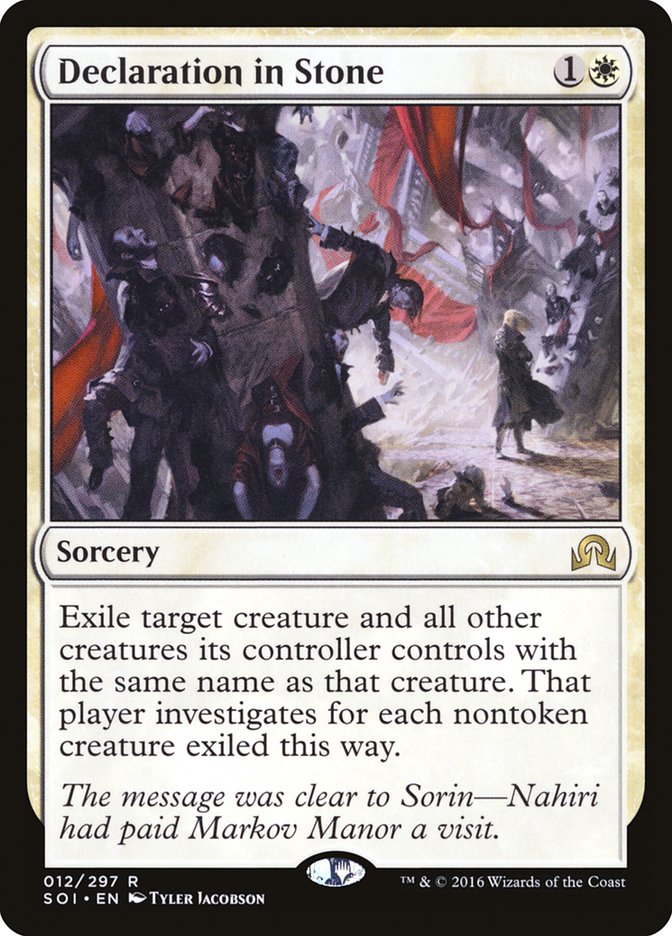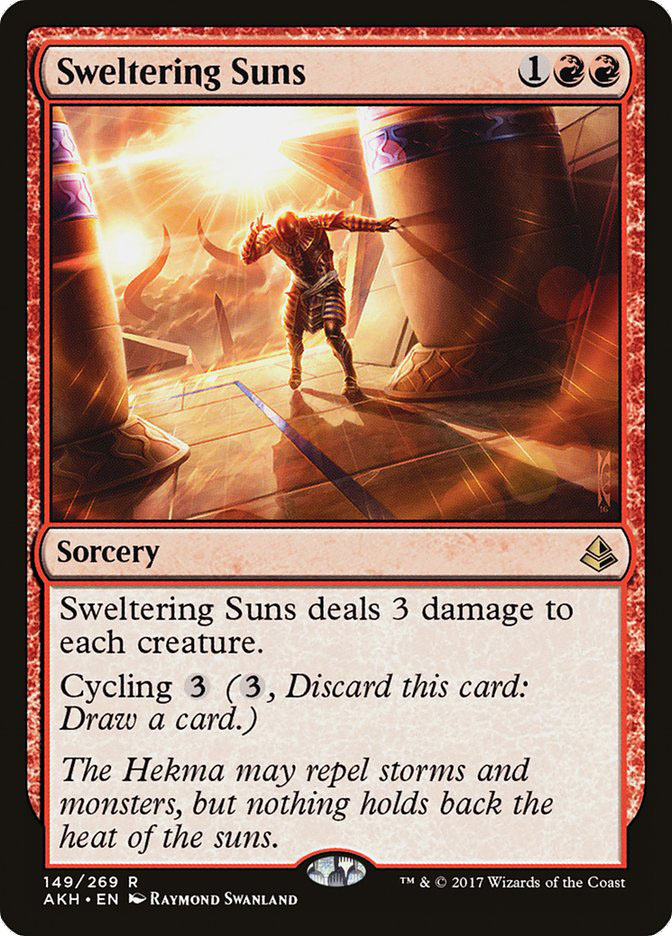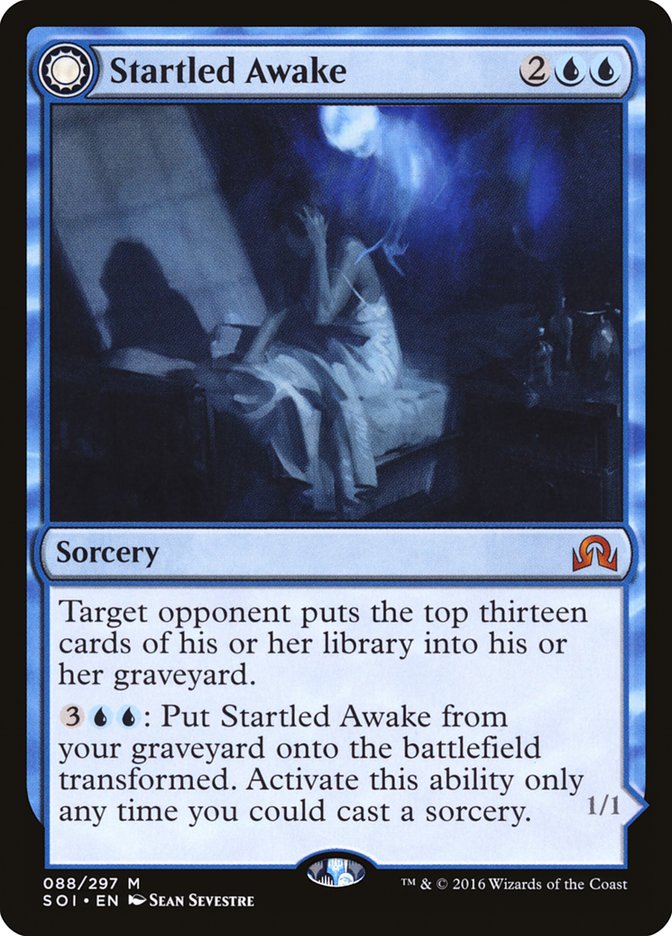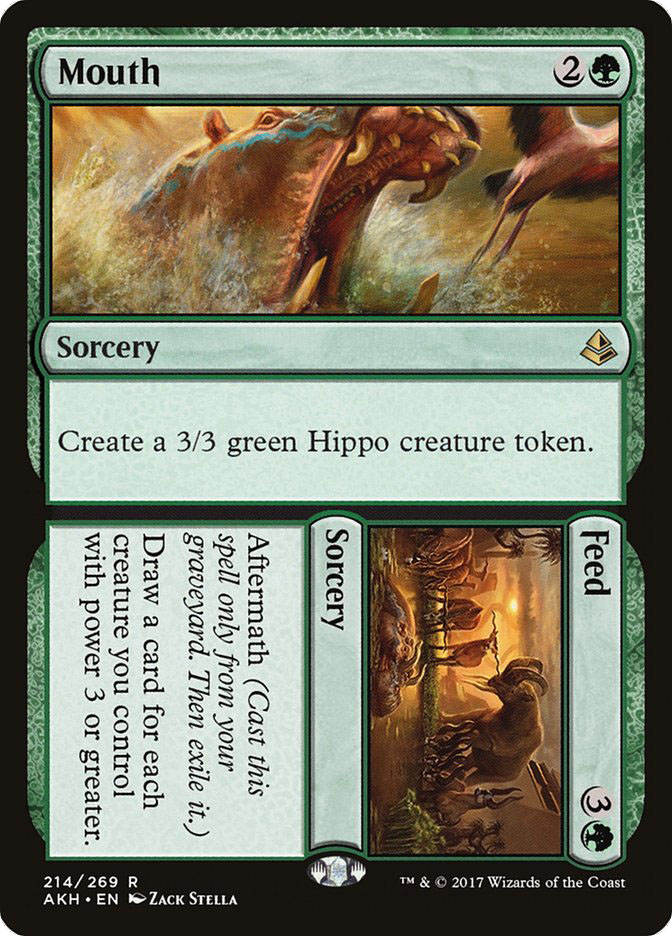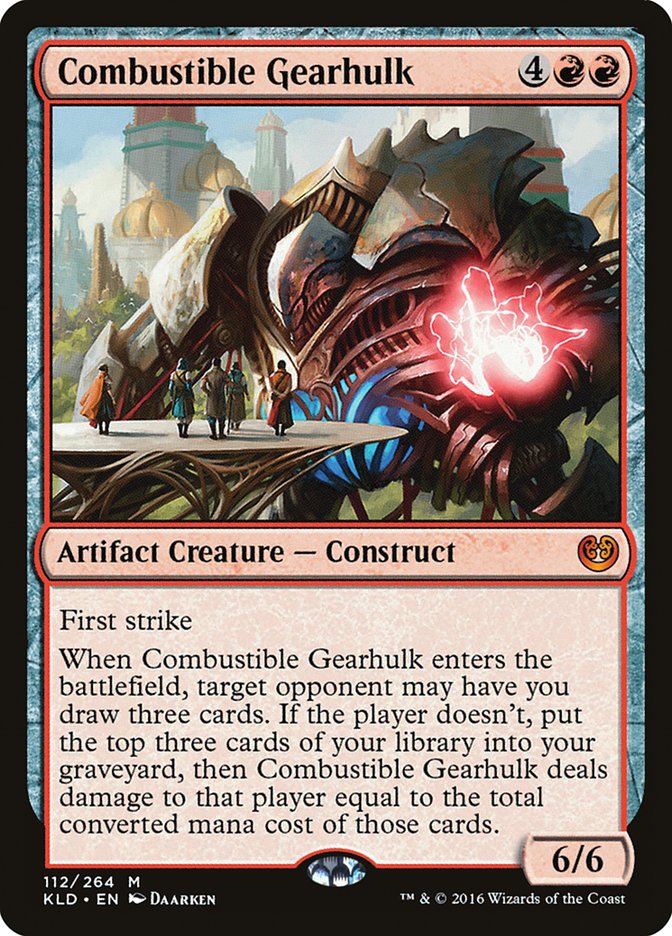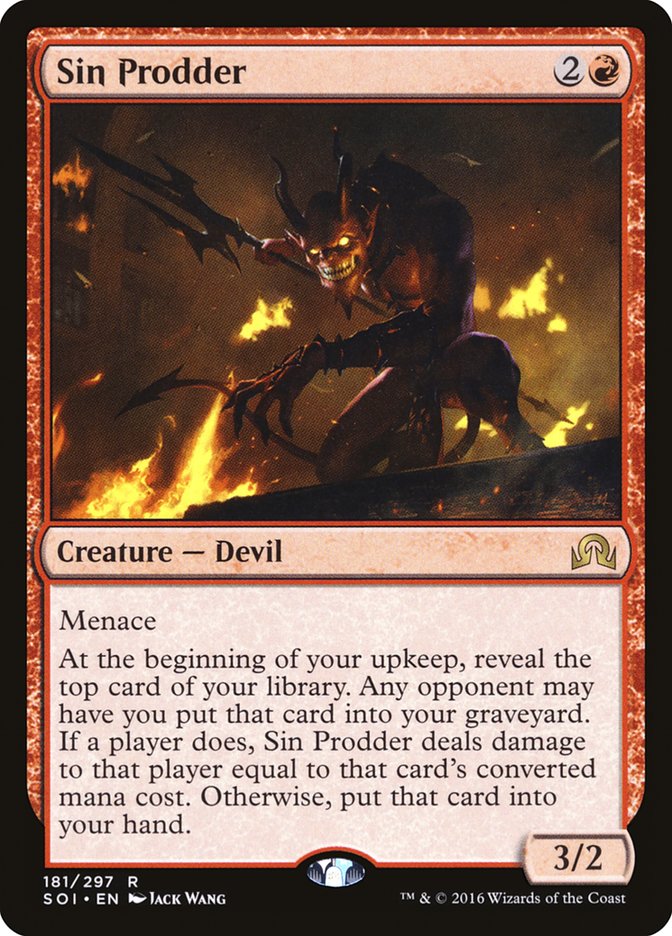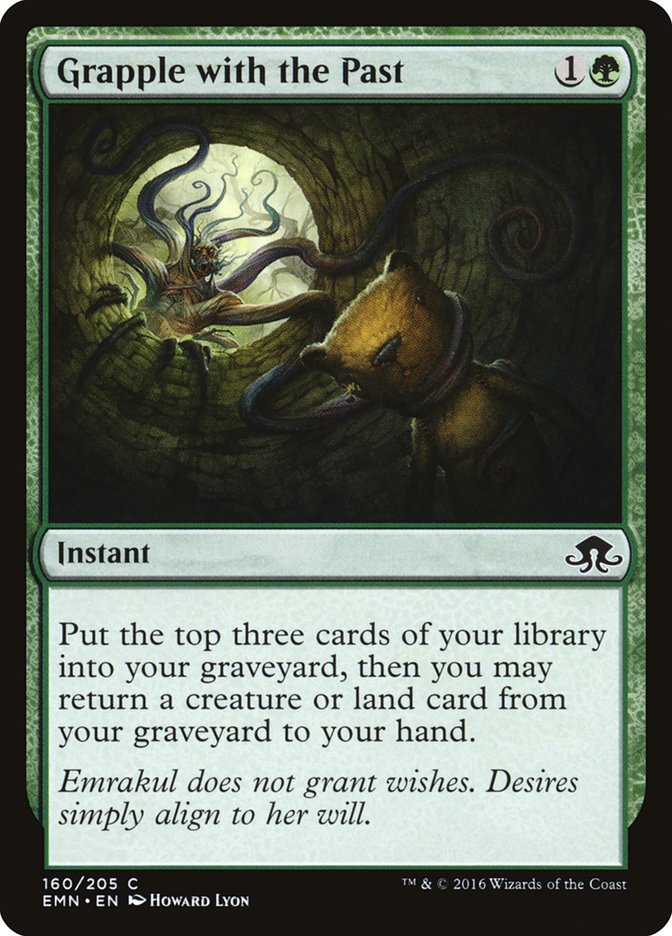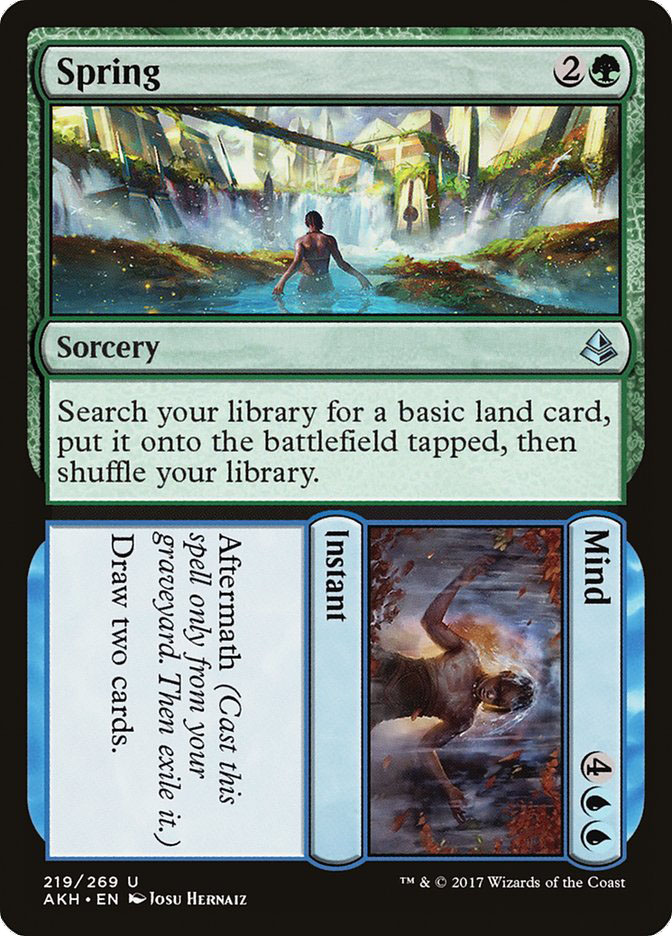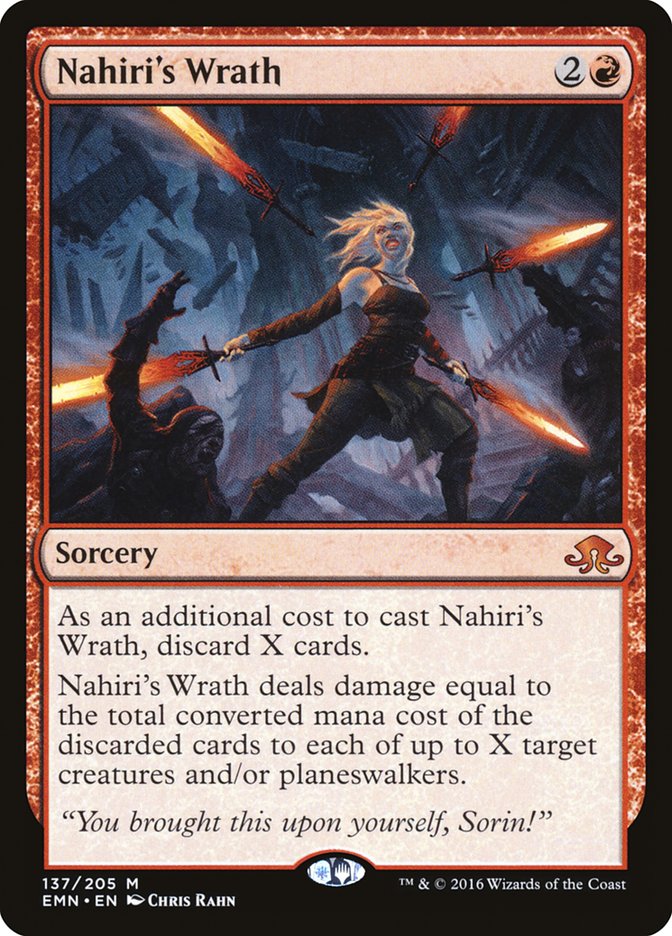Aftermath has made an impact on Standard already. And now that I’ve checked
out some #GPRichmond,
it seems that it’s impacted Limited, as well. Having access to two
different halves of a spell leads to both great synergy and the opportunity
to truly divide the spells, using each when either half is relevant.
Let’s talk about how this relates to delirium.
Turning on delirium in a timely fashion opens the door to more ambitious
deckbuilding compositions and strategies, and cards on the verge of seeing
play might get a bit more chance than they had before because of these
designs. This strategy has everything it needs to combat most deck types,
and is certainly an aggressive choice for a Friday Night Magic if the likes
of Zombies doesn’t quite tickle your fancy.
They’re more than just a great way to help enable delirium. The spells themselves can be pretty good, too.
Jeskai colors have typically been associated with instants and sorceries,
mostly lending to the general reliance on blue within that color
combination. Red and white usually make an aggro deck of some kind, and
blue and white often make control decks. The big distinguishing factor
there is the Island mana base, and it stands to reason that those spells
aligned with that color have a big, even if temporary impact on the game.
Failure, our rare multicolored aftermath spell in Jeskai, bears a striking
resemblance to another card designed to make an impact from Eldritch Moon: Unsubstantiate.
While this spell never saw (nor was it designed to see) ubiquitous play, it
was still a way to deal with an uncounterable spell or a problem creature
for a short period of time. Savvy deckbuilders saw its home in decks built
around Fevered Visions, and this deckbuilder is no different.
Now, I’ve already brought you plenty of Fevered Visions decks, and I’ve
even had one put together
since Amonkhet released
. If Fevered Visions isn’t your bag, I have two things to say. One, who
hurt you in your life to make you not like drawing a bunch of
cards? Two, rest assured that I’ll have a second deck today, free from
Fevered Visions, highlighting one last aspect of aftermath cards we won’t
have touched on yet.
So, depending on how you look it, let’s brew with Fevered Visions or let’s
get this over with!
Creatures (4)
Lands (25)
Spells (31)

This deck shares a lot in common, both thematically and card-for-card with
some of my other brews: I shared a few during my first week of Amonkhet brews, there’s a deck I shared
several months ago
that is related, and, if I might say, one of my most well-constructed
lists–you can find it
here
.
Creatures
The original deck featured between six and eight creatures, but this time,
we have only four, three of which are Curious Homunculus. This one-eyed
critter flips into a beastly 3/4 with prowess. Prowess, once peppered
across several playable creatures, is now considerably rarer. That makes
Voracious Reader all the better.
Curious Homunculus, and especially Voracious Reader, support the often
hefty cost of casting aftermath spells’ first and second halves. From a
casting perspective, casting each half counts as two different spells. For
Voracious Reader, that means that both halves are cheaper to cast and their costs are reduced. Any cost reducer is effectively
doubled with aftermath spells, and the majority of them like to be cast in
the same turn, even though their high mana costs often prevents this.
Baral, Chief of Compliance, provides the same reduction benefit and it can
be accessed more quickly, as it does not have the same graveyard
requirement and can provide the benefit immediately.
Spells
Besides our standard four copies of Fevered Visions, the rest of the spells
in the deck are instants or sorceries.

These are the deck’s tempo spells. Fevered Visions, more than anything
else, is a tempo card; and if you can take that away from your opponent,
their extra cards will be worthless, while you draw enough spells and buy
enough time, to thoroughly protect yourself. Failure is one half of
Unsubstantiate, and its Comply half is a great way to stop such problematic
cards as Gideon, Ally of Zendikar, a counterspell like Negate, or a vicious
finisher like Cut. It’s just for one turn, but that’s one more spell they
can’t play. While both halves are just stays of executions, the time is
worth something when you’re providing pressure another way.
When five damage for one mana is what you need, Lightning Axe is where you
want to be. Discarding a card is an acceptable cost for this efficiency,
but here, discarding can benefit us, too. Fiery Temper has plenty of
opportunities to be cast for its madness cost, but it’s still an acceptable
rate at its normal cost. The double red is well-supported by the land base
despite the fact that we’re three colors.
Cathartic Reunion did not exist when I built my Game Day deck. With
Cathartic Reunion, you can fulfill Curious Homunculus’s flip requirement
for two mana. Discard two instants or sorceries (again, not as big a deal
this time), and you’re ready to go!
Revisiting the deck originally began with Onward in congress with Curious
Homunculus.
Picture this. You have an Onward in your hand and another in the graveyard.
You have a flipped Voracious Reader. Cast Victory from the graveyard,
giving Voracious Reader a prowess trigger, then attack. Your opponent
reluctantly declines to block your 4/5 double striker. Cast an Onward from
your hand, let the second prowess trigger make Voracious Reader a 5/6,
then, following resolution, it’s a 10/6 double striker. That’s twenty
damage!
While not reliable enough to support the deck completely, Onward allows
this to happen. Even if you play Onward, then Victory, your Voracious
Reader will still hit for eighteen as a 9/6. Insult provides a “double
strike” for your creatures and your damage spells. Although you
can’t use it instantly to blast someone with Fevered Visions triggers, but
casting a Fiery Temper for six is pretty good, too. Geistblast also lets
you copy either an aftermath spell to hit twice as hard. Dawn is a hard
stop to an aggressive, high-power deck like G/B Delirium. If your Curious
Homunculus hasn’t flipped, it flies under Dawn’s radar. Even if it kills a
flipped Voracious Reader, Dusk can recover all copies of Curious Homunculus
in your graveyard! Commit has good use for either half, despite the fact
that you’ll “lose” your graveyard. If you give your opponent a fresh grip
of seven cards and you have Fevered Visions out, they’ll have to
work very hard to empty their hand and not die to it. You’ll have more than
enough counters and removal to make whatever they cast irrelevant.
Sideboard
Declaration in Stone was a keystone in the original Jeskai Fevered Visions
deck. You are happy to spend two mana (or sometimes just one) to kill one
or more creatures and provide them Clues, something else that
costs mana and gives them cards. Declaration in Stone isn’t as ubiquitous
as it once was, but it’s still one of the best tricks you can use against a
variety of creature-centered decks.
You’ll find that people are quick to cut their creature removal down after
fighting a Fevered Visions deck that has few or no creatures in it. They
don’t want a Fatal Push or Essence Scatter keeping their hand count high
without any targets. Stormchaser Mage punishes this line of sideboarding,
plus it dodges both of this deck’s sweepers.
Speaking of sweepers, let’s stare at Sweltering Suns.
Sweepers have a tendency to either be exactly the card you want,
or somehow incompatible with the board state, whether it’s not strong
enough to kill the creatures (or other nonland permanents) on the
battlefield or it’s too expensive to cast in time. The cycling is the
steepest in Standard, and I don’t think you’ll use it that often, but it
does have the benefit of not killing a flipped Voracious Reader or a
Stormchaser Mage, which prowess saves.
Release the Gremlins benefits from this deck’s high land count and cost
reduction. With Baral, Chief of Compliance or a Curious Homunculus, this
becomes a sorcery-speed Shatter that gives you a 2/2. Again, your opponent
will likely have removed their own conditional sweepers to prevent a dead
card, so spending a few mana will not only blast Heart of Kiran or cutesy
artifact shenanigans into smithereens but it will also give you an army of
troublesome Gremlins.
While slow, Startled Awake can punish a deck that is happy to either mill
their deck or draw lots of cards. This steady mill effect can’t be easily
countered or undone, so it’ll be hard to stop. In theory, at least.
We’ve got one more neat side-effect of aftermath cards: converted mana
cost.
While on the stack, Beck has a converted mana cost of two. So does
Boom, of Boom // Bust fame. However, together, a split card’s converted
mana cost is the sum of its two halves. This is still the case even after
the
recent rules change regarding split cards
, and I want us to take advantage of that as best as we can. While we’re at
it, we’ll use the remained of aftermath cards that haven’t gotten the love
they deserve.
So which cards help us leverage the converted mana cost?
In our current Standard, red seems to care the most. Sin Prodder is a
reasonable fighter on its own, with a good body on curve, and untapping
with one has the potential to give your opponent’s a difficult choice: let
you draw an extra card, or take a lot of damage. Stuffing your deck with
high-mana cost cards normally makes the decision easy for your opponent:
“Sure, go ahead and draw that eight-drop. You’re never going to cast it
anyway.” With aftermath cards, though, you’ll actually be able to use the
first half. Even if they take damage and deny you the card, you’ll still be
able to use the second half!
Combustible Gearhulk goes from being a nuisance to creating a devastating
trigger if you’ve got plenty of aftermath spells.
Let’s start counting!
Creatures (9)
Lands (25)
Spells (26)

This deck is a bit harder to describe in the abstract, but the concept is
simple. Play cheap removal, leverage discard outlets, and outpace your
opponent with each of your cards. Nominally a midrange strategy, this deck
tries to blast your opponents with huge chunks of life, maintaining a good
hand size, and picking off other creatures with Dynavolt Tower, which will
trigger once for each half of an aftermath card you cast.
This remains one of my favorite enablers in this deck, and it helps you get
back a singleton threat that your opponent has dealt with or one you milled
over during the course of the game. Corpse Churn, a similar card, will
always get the back seat, as it can’t get a land.
Spring is one of my favorite aftermath cards in this deck for two reasons.
First, it’s aligned with the deck’s plan of casting big spells and it helps
smooth out the deck’s multicolor plan. Second, it’s a nine-mana card,
meaning that a hit off Sin Prodder or Combustible Gearhulk is crippling.
The Mind half of the spell is pretty expensive, but in a grindy game, I’ll
pay Think Twice’s Flashback cost twice for the same effect. Combined with
Attune with Aether, we have plenty of ways to get land and thin the deck
down to just the good stuff: high-cost aftermath cards.
While this is not a high-cost split card, its ability to
annihilate flyers and non-flyers is powerful enough. If you need the Earth
half, you need only spend a green mana to put it from your hand to the
graveyard. This also gives you a prowess trigger and a Dynavolt Tower
trigger as well.
I tried to make this card work when it was first spoiled but found it
difficult to come out profitably, either with madness cards or other cards
that preferred the graveyard. Now, you can toss a couple aftermath cards,
completely decimate Planeswalkers, and retain access to an effect that you
can use when you’re ready.
Rags is a fairly soft sweeper, so there’ll be more than a few times where
you’ll toss this clunker into the yard without a problem. In other
situations, Riches will let you take control of your opponent’s largest
threat as you pick off the weak ones. Admittedly, this deck is light on
threats; if your opponent is too, you can still get the one that matters.
If only Emrakul, the Promised End was still around…
Mouth is decent in this list, but where I really want to crank it up is in
a deck with cards like Prized Amalgam, Stitchwing Skaab, and their friends.
Then you can could not only have an army in your graveyard, you can
recharge your hand!
Sadly, I won’t be home in time to make the SCG Tour event in my own city, #SCGKY, but the format
being presented on that event’s main stage, Team Constructed, is one I’ll
eagerly be watching from afar, seeing local friends and storied pros
battling it out to win the three-headed battle of wits.
Best of luck to my pals going to battle in my hometown, and may the best
three-headed giant win!


